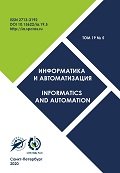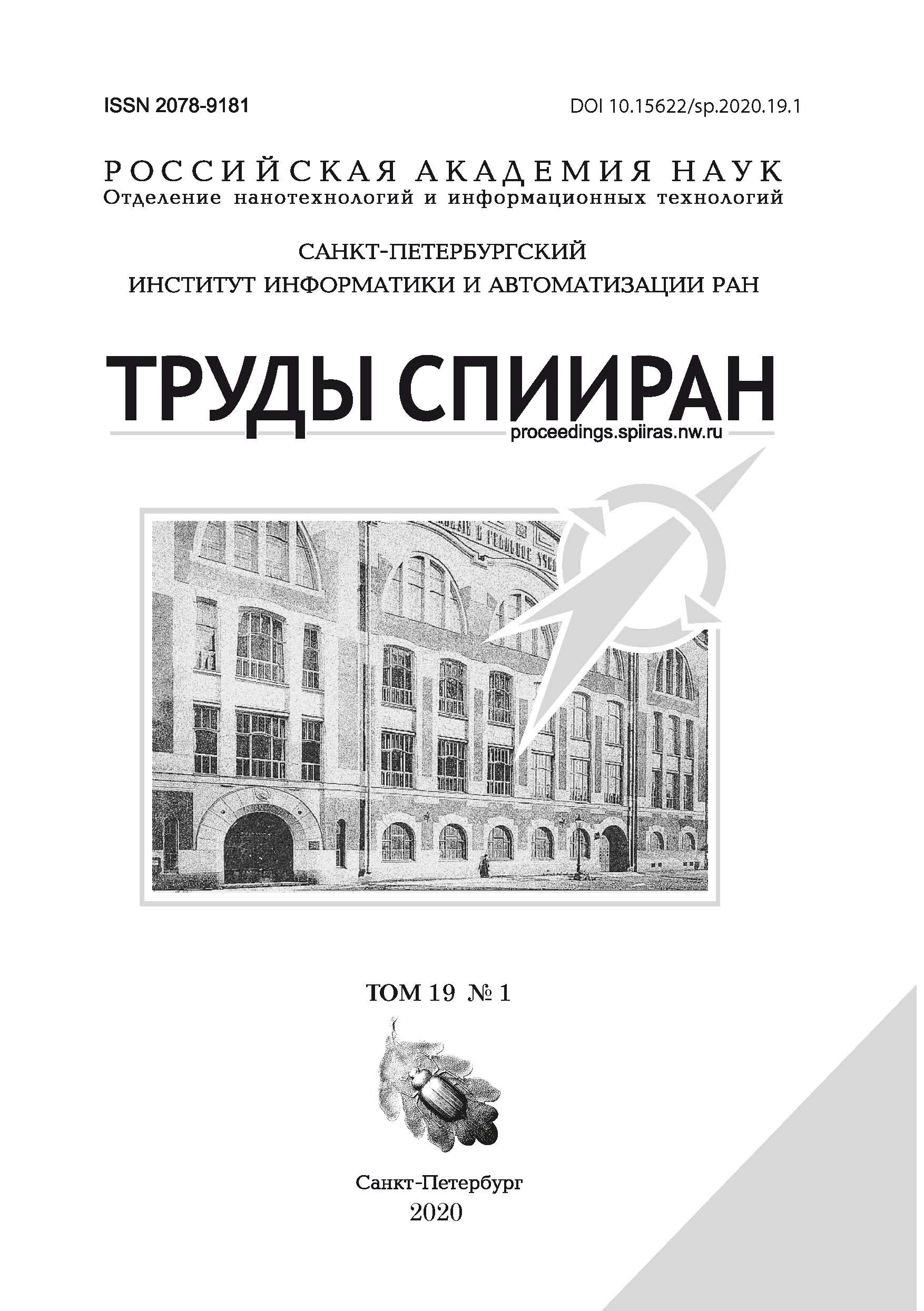Кибернетический подход к проблеме взаимодействия общества и природы в условиях беспрецедентно меняющегося климата
Ключевые слова:
геофизическая кибернетика, глобальное потепление, экономика изменения климата, геоинжиниринг, климатический инжиниринг, обратные связи, оптимальное управлениеАннотация
В статье с кибернетических позиций рассмотрена проблема взаимодействия природы и общества в условиях современного изменения климата, беспрецедентного по своим масштабам и темпам, вызванного антропогенной деятельностью. Представлена разработанная нами структура кибернетической системы «климат-экономика», проанализированы слабые стороны субъекта глобального управления и обсуждены основные причины неопределенностей оценок изменения климата и наносимого этими изменениями экономического ущерба. Отмечается, что адаптационные меры и стратегии, разрабатываемые и реализуемые правительствами разных стран и межправительственным организациями, не устраняют причины глобального потепления и, следовательно, имеют ограниченные возможности, поскольку человек и природа могут существовать только при определенных условиях окружающей среды, выход за пределы которых вследствие изменения климата может привевести к глобальной биологической катастрофе. Решения в области климатической политики принимаются в условиях неопределенности, обусловленной неоднозначностью оценок будущего климата, что, в свою очередь, является следствием не совсем адекватного учета обратных связей в моделях климатической системы. С помощью малопараметрических моделей земной климатической системы проиллюстрировано влияние обратных связей в системе на значительные межмодельные расходжения оценок изменения климата, полученных посредством современных климатических моделей высокой степени сложности. Поскольку предлагаемые экспертами меры адаптации к изменению климата являются борьбой не с причиной, а со следствием, в качестве радикальной адаптационной стратегии нами видится геоинжиниринг. В отличие от ранее выполненных исследований, задача целенаправленой модификации климатических условий, реализуемая методами геоинжиниринга, рассматривается нами в рамках теории оптимального управления с математической формализацией целей геоинженерных возлействий и методов их достижения. В статье приведен пример постановки и решения оптимизационной задачи стабилизации климата Земли за счет инжекции в стратосферу мелкодисперсного сульфатного аэрозоля.
Литература
2. Bradley R. Paleoclimatology: reconstructing climates of the quaternary. Else-vier. 2015. 696 p.
3. NOAA National Centers for Environmental Information, State of the Climate: Global Climate Report – December 2018. Available at: www.ncdc.noaa.gov/sotc/global/201812 (accessed: 21.12.2019).
4. Stocker T.F. et al. Climate Change 2013: The Physical Science Basis. Contribu-tion of Working Group I to the Fifth Assessment Report of the Intergovern-mental Panel on Climate Change. University Press. 2013. 1535 p
5. NOAA Earth System Research Laboratory, Global Monthly Mean CO2. Availa-ble at: www.esrl.noaa.gov/gmd/ccgg/trends/global.html (accessed: 21.12.2019).
6. Ripple W.J. et al. World scientists’ warning of a climate emergency. BioScience. 2019. Issue 1. vol. 70. pp. 8–12.
7. Santer B.D. et al. Celebrating the anniversary of three key events in climate change science. Nature Climate Change. 2019. vol. 9. no. 3. pp. 180–182.
8. Diem C. There is no climate emergency, say 500 experts in letter to the United Nations. Available at: www.aei.org/carpe-diem/there-is-no-climate-emergency-say-500-experts-in-letter-to-the-united-nations (accessed: 21.12.2019).
9. Foster P. Half a century of robust climate models. Nature. 2017. vol. 545. pp. 296–297.
10. Taylor K.E., Stouffer R.J., Meehl G.A. An overview of the CMIP5 and the experimental design. Bulletin of the American Meteorological Society. 2012. vol. 93. pp. 485–498.
11. Dymnikov V.P., Lykosov V.N., Volodin E.M. [Modelling of climate and its changes: contemporary problems]. Vestnik Rossijskoj akademii nauk – Herald of the Russian Academy of Sciences. 2012. Issue 82. no. 3. pp. 227–236. (In Russ.).
12. Lupo A., Kininmonth W., Armstrong J.S., Green K. Global climate models and their limitations. Climate change reconsidered II: Physical Science. 2013. vol. 9. 139 p.
13. Wang Z., Wu J., Liu C., Gu G. Integrated assessment models of climate change economics. Springer Singapore. 2017. 181 p.
14. Pindyck R.S. The use and misuse of models for climate policy. Review of Envi-ronmental Economics and Policy. 2017. vol. 11. pp. 100–114.
15. Nordhaus W. Scientific and economic background on DICE models. Available at: https://sites.google.com/site/williamdnordhaus/dice-rice (accessed: 04.12.2019).
16. Board O.S., National Research Council. Climate intervention: Carbon dioxide removal and reliable sequestration. National Academies Press. 2015. 154 p.
17. Board O.S., National Research Council. Climate intervention: Reflecting sun-lights to cool Earth. National Academies Press. 2015. 260 p.
18. Soldatenko S.A. Weather and climate manipulation as an optimal control for adaptive dynamical systems. Complexity. 2017. vol. 2017. 12 p.
19. Meinshausen M. et al. The RCP greenhouse gas concentrations and their exten-sions from 1765 to 2300. Climatic Change. 2011. vol. 109. no. 1-2. pp. 213–241.
20. Soldatenko S.A., Yusupov R.M. Optimal control of aerosol emissions into the stratosphere to stabilize the Earth’s climate. Atmospheric and Oceanic Physics. 2018. vol. 54. pp. 480–486.
21. Soldatenko S.A., Yusupov R.M. Optimal control for the process of using artifi-cial sulfate aerosols for mitigating global warming. Atmospheric and Oceanic Optics. 2019. vol. 32. pp. 55–63.
22. Soldatenko S.A., Yusupov R.M. [On the selection of control parameters in modelling of purposeful modification of weather and climate processes]. Trudy SPIIRAN – SPIIRAS Proceedings. 2016. vol. 1(44). pp. 153–180. (In Russ.).
23. Soldatenko S.A., Yusupov R.M. On the possible use of geophysical cybernet-ics in climate manipulation (geoengineering) and weather modification. WSEAS Transactions on Environment and Development. 2015. vol. 11. pp. 116–125.
24. Soldatenko S.A. Estimating the impact of artificially injected stratospheric aer-osols on the global mean surface temperature in the 21th century. Climate. 2018. vol. 6. no. 4. pp. 85.
25. Gaskarov D.V. et al. Vvedenie v geofizicheskuyu kibernetiku [An introduction to geophysical cybernetics and environmental monitoring]. SPb: SPbGUVK. 1998. 165 p. (In Russ.).
26. Wiener N. Cybernetics or control and communication in the animal and the machine. Technology Press. 1948. 194 p.
27. Wiener R. Cybernetics and society: The human use of human beings. Houghton Mifflin. 1950. 241 p.
28. Sickles R.C., Zelenyuk V. Measurement of productivity and efficiency. Uni-versity Press. 2019. 626 p.
29. Fonu U.P. World Economic Outlook: Seeking Sustainable Growth-Short-Term Recovery. Long-term challenges (International Monetary Fund Publications: Washington DC). 2017. 284 p.
30. Rozenwasser E., Yusupov R. Sensitivity of automatic control systems. CRC Press. 2019. 456 p.
31. Soldatenko S.A., Yusupov R.M. Estimating the influence of thermal inertia and feedbacks in the atmosphere–ocean system on the variability of the global sur-face air temperature. Atmospheric and Oceanic Physics. 2019. vol. 56. pp. 591–601.
32. Soldatenko S., Colman R. Climate variability from annual to multi-decadal timescales in a two-layer stochastic energy balance model: analytic solutions and implications for general circulation models. Tellus A: Dynamic Meteorolo-gy and Oceanography. 2019. vol. 71. no. 1. pp. 1–15.
33. Soldatenko S.A., Yusupov R.M. [Sensitivity and feedback loops in a zero-dimensional climate model in the context of weather and Earth’s climate con-trol]. Trudy SPIIRAN – SPIIRAS Proceedings. 2017. vol. 52. pp. 5–31. (In Russ.).
34. Gambhir A. et al. A review of criticisms of Integrated Assessment Models and proposed approaches to address these, through the lens of BECCS. Energies. 2019. vol. 12. no. 9. pp. 1747.
35. Pindyck R.S. Climate change policy: What do the models tell us? Journal of Economic Literature. 2013. vol. 51. pp. 860–872.
36. Lazo J.K., Lawson M., Larsen P.H., Waldman D.M. United States economic sensitivity to weather variability. Bulletin of the American Meteorological Soci-ety. 2011. vol. 92. no. 6. pp. 709–720.
37. Crepin A.S., Karcher M., Gascard J.C. Arctic climate change, economy and society (ACCESS): Integrated perspectives. Ambio. 2017. vol. 46. no. 3. pp. 341–354.
38. Katssov V.M., Porfir'ev B.N. [Assessment of the macroeconomic effects of climate change in the Russian Federation for the period up to 2030 and further perspectives (report summary)]. Trudy Glavnoj geofizicheskoj observatorii im. A.I. Voejkova [Proceedings of the Main Geophysical Observatory named after A.I. Voeikov]. 2011. vol. 563. pp. 7–59. (In Russ.).
39. Akent'eva E.M. et al. Doklad o klimaticheskih riskah na territorii Rossijskoj Federacii [Report on climate risks in the Russian Federation]. GGO im. A.I. Voejkova. 2017. 106 p. (In Russ.).
40. Soldatenko S.A. et al. [On the assessment of climate risks and vulnerability of natural and economic systems in the marine Arctic zone of the Russian Federa-tion]. Problemy Arktiki i Antarktiki – Arctic and Antarctic Research. 2018. vol. 1(64). pp. 55–70. (In Russ.).
41. Hallegatte S., Green C., Nicholls R.J., Corfee-Vorlot J. Future flood losses in major coastal cities. Nature Climate Change. 2013. vol. 3. no. 9. pp. 802–806.
42. Kopp R.E. et al. Probabilistic 21st and 22nd century sea‐level projections at a global network of tide‐gauge sites. Earth Future. 2014. vol. 2. no. 8. pp. 383–406.
43. Taylor K.E., Stouffer R.J., Meehl G.A. An overview of CMIP5 and the experi-ment design. Bulletin of the American Meteorological Society. 2011. vol. 93. pp. 485–498.
44. Colman R.A., Power S.B. What can decadal variability tell us about climate feedbacks and sensitivity? Climate Dynamics. 2018. vol. 51. pp. 3815–3828.
45. Soldatenko S.A. Estimated impacts of climate change on eddy meridional moisture transport in the atmosphere. Applied Sciences. 2019. vol. 9. no. 23. pp. 4992.
46. Ginzburg A.S., Demchenko P.F. Anthropogenic meso-meteorological feed-backs: A review of recent research. Atmospheric and Oceanic Physics. 2019. vol. 55. pp. 573–590.
47. Hasselmann K. Stochastic climate models. Part I. Theory. Tellus A. 1976. vol. 28. pp. 473–485.
48. Middlemas E., Clement A. Spatial patterns and frequency of unforced decadal scale changes in global mean surface temperature in climate models. Journal of Climate. 2016. vol. 29. no. 17. pp. 6245–6257.
49. Geoffroy O. et al. Transient climate response in a two-layer energy-balance model. Part I: Analytical solution and parameter calibration using CMIP5 AOGCM ex¬periments. Journal of Climate. 2013. vol. 26. no. 6. pp. 1841–1857.
50. Demchenko P.F., Semenov V.A. Estimation of uncertainty in surface air tem-perature climatic trends related to the internal dynamics of the atmosphere. Doklady Earth Sciences. 2017. vol. 476. pp. 1105–1108.
51. Ohtilev M.Yu. [The concept and technology of proactive business lifecycle management]. Izvestiya vysshih uchebnyh zavedenij. Priborostroenie – Journal of Instrument Engineering. 2020. Issue 63. no. 1. (In Russ.).
52. Ronzhin A.L. [Application of radio frequency identification technology to build a system for controlling the turnover of on-board kitchen equipment]. Voprosy radioelektroniki. Seriya: Tekhnika televideniya – Questions of radio electronic. Series: Television Technique. 2020. vol. 1. pp. 3–10. (In Russ.).
Опубликован
Как цитировать
Раздел
Copyright (c) 2020 Сергей Анатольевич Солдатенко, Юсупов Рафаэль Мидхатович Yusopov, Колман Роберт Colman

Это произведение доступно по лицензии Creative Commons «Attribution» («Атрибуция») 4.0 Всемирная.
Авторы, которые публикуются в данном журнале, соглашаются со следующими условиями: Авторы сохраняют за собой авторские права на работу и передают журналу право первой публикации вместе с работой, одновременно лицензируя ее на условиях Creative Commons Attribution License, которая позволяет другим распространять данную работу с обязательным указанием авторства данной работы и ссылкой на оригинальную публикацию в этом журнале. Авторы сохраняют право заключать отдельные, дополнительные контрактные соглашения на неэксклюзивное распространение версии работы, опубликованной этим журналом (например, разместить ее в университетском хранилище или опубликовать ее в книге), со ссылкой на оригинальную публикацию в этом журнале. Авторам разрешается размещать их работу в сети Интернет (например, в университетском хранилище или на их персональном веб-сайте) до и во время процесса рассмотрения ее данным журналом, так как это может привести к продуктивному обсуждению, а также к большему количеству ссылок на данную опубликованную работу (Смотри The Effect of Open Access).






